TicWatch GTH
Two-minute review
The Mobvoi TicWatch GTH might look a little like an Apple Watch at first glance, but the similarity ends there. This is a cheap device, and you'll get what you pay for.
Some of its tools work well enough. Its sleep monitoring is acceptable, tracking periods of light and deep sleep so you can monitor patterns throughout the night.
Unfortunately, its fitness tracking leaves rather a lot to be desired. There's no on-board GPS, meaning you have to carry your phone on runs, bike rides and walks so the TicWatch can piggyback on its GPS receiver. When it does, results can be quite inaccurate, shaving half a kilometer off our pre-measured 5km route. While that might not matter so much if you're new to running or riding, if you're training for a mid-distance event that margin of error is a real concern.
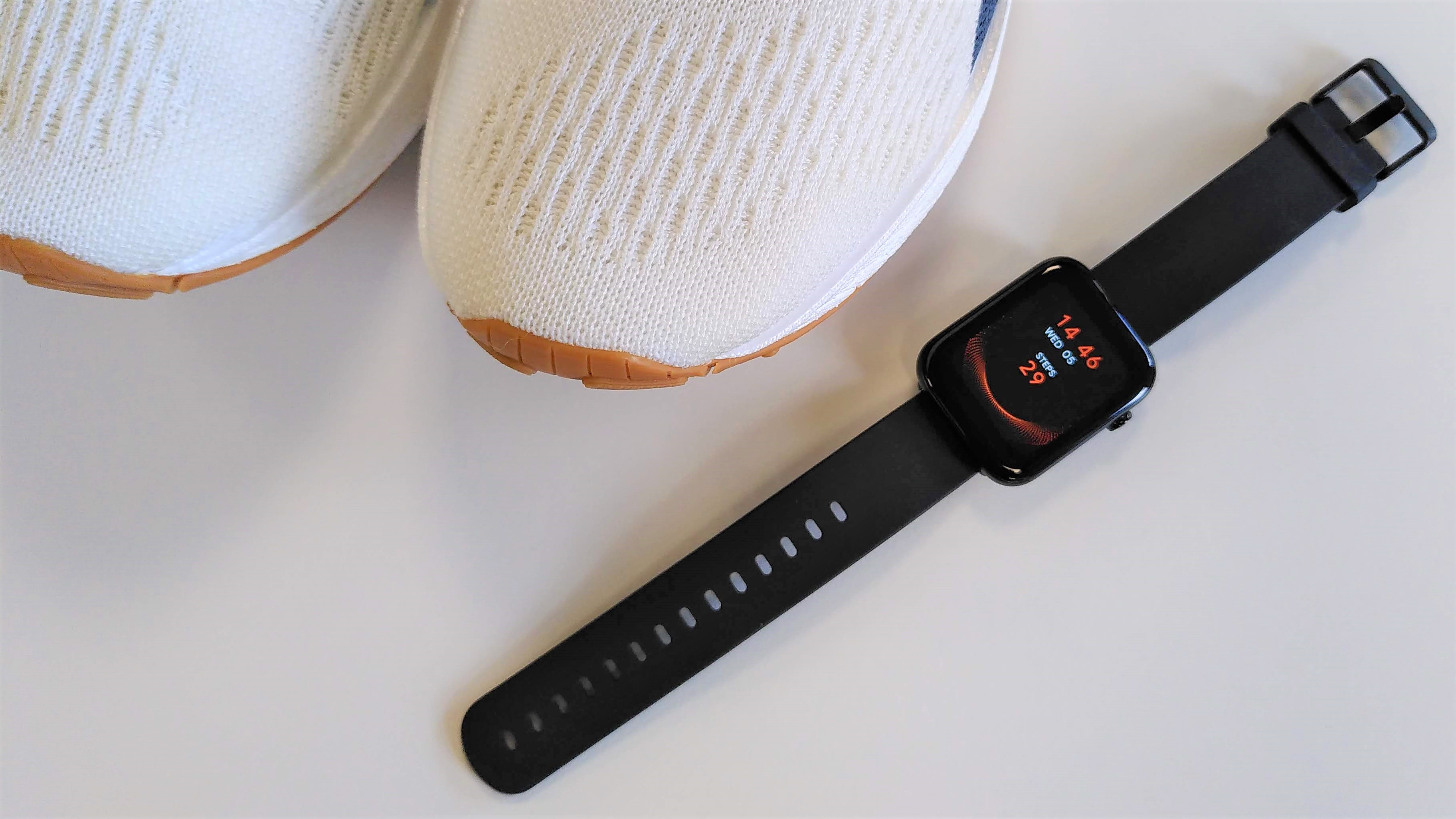
Heart rate monitoring also proved spotty. The TicWatch GTH was slow to respond to changes during a spin session, and although its readings were mostly consistent, we saw some alarming peaks during a post-workout cooldown
The estimate of calories burned was also suspiciously low. While it's easy to overestimate much much energy you use during a workout, 75 calories for a half-hour interval session is much less than we would have expected.
Price and release date
The TicWatch GTH was released globally in April 2021, and is available for $79.99 / €79.99 (about £60 / AU$100). That's a little more than the similarly-specced Amazfit Bip, but less than the TicWatch G2, which is one of the cheapest smartwatches around running Google WearOS.
Design
The TicWatch GTH has a smart, minimalist design, with a rectangular case measuring 43.2 x 35.2 x 10.5mm. That's very similar to the larger version of the Apple Watch 6, which measures 44 x 38 x 10.5mm.
However, the TicWatch GTH has a considerably larger bezel; whereas the 44mm Apple Watch has a 1.78in AMOLED display, the TicWatch GTH's LCD display measures just 1.55in.
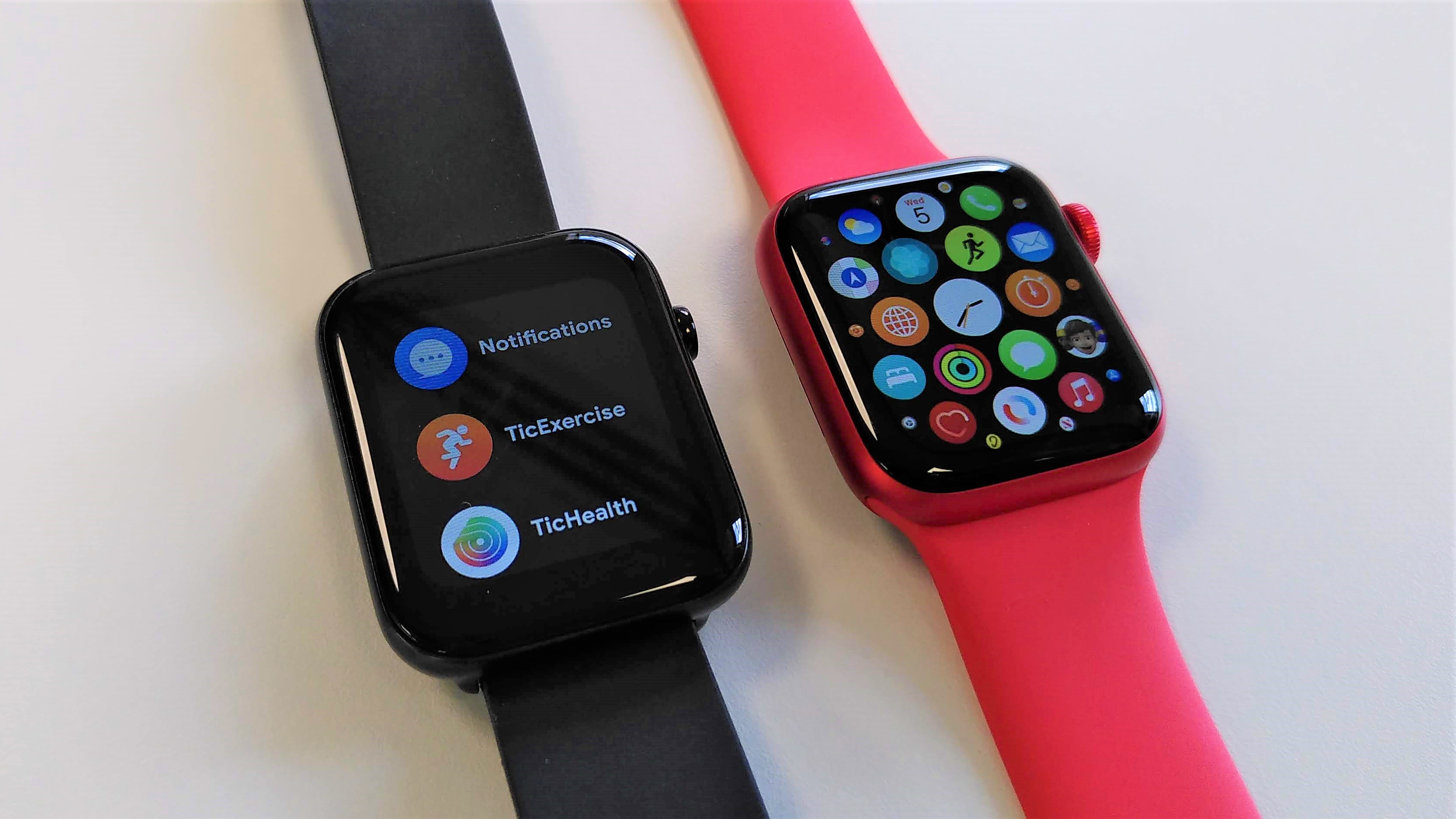
On the reverse, you'll find the standard optical heart rate monitor, plus a sensor for measuring skin temperature.
It's operated using the touchscreen, together with a single physical button on the right-hand edge that can be pressed or held to perform different functions.
The TicWatch GTH has a 20mm-wide silicone band that feels slightly stiffer than that of the Apple Watch, and is secured with a conventional stainless steel buckle rather than a post-style fastening. The case and band are only available in black, and only one strap size is included in the pack.
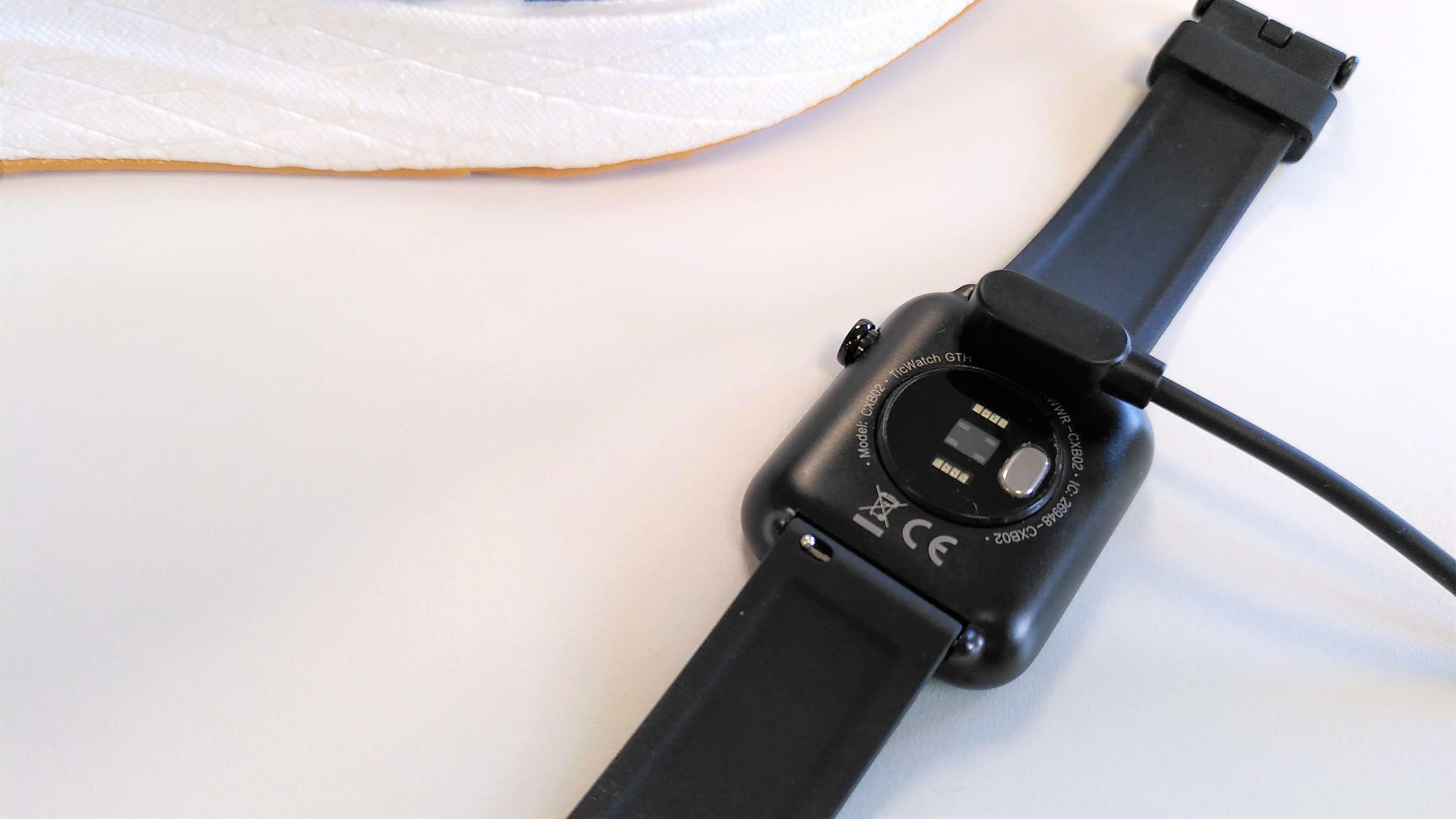
The watch charges via a USB cable with two small contacts that attaches to the back of the watch via a magnet. This has to be aligned carefully to work correctly, and in our tests it became disconnected from the watch quite easily.
Smartwatch features
In terms of smartwatch features, the TicWatch GTH is quite basic. There are third-party apps either pre-installed or available through an online store, so you won't be streaming your Spotify playlist through it, but you can use it to control your phone's media player, which is useful during workouts.
The ability to receive smartphone notifications on your wrist is always useful, but you'll only be able to see a few words of each notification, and tapping them doesn't open the relevant app on your phone. It's a small complaint, but it's also slightly frustrating that Mobvoi has used a font without anti-aliasing for notifications, which gives an unpolished look and draws attention to the screen's relatively low resolution.
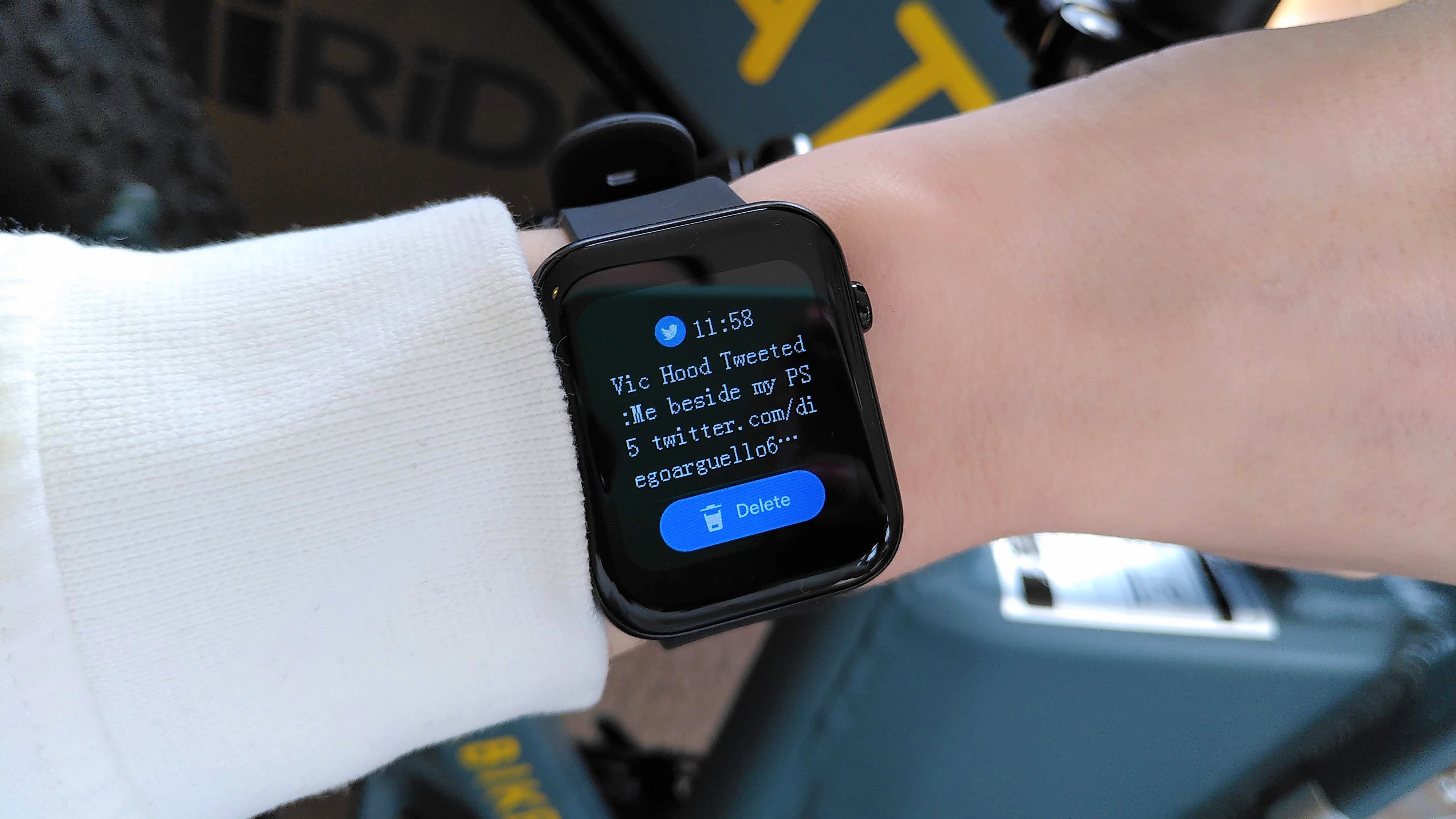
We highly recommend opening the watch's settings menu and enabling 'do not disturb' if you're using it to monitor your sleep, or you'll be woken by a string of vibrations as WhatsApp backs up your messages (with a new alert for each 1MB of data transferred). This isn't a problem unique to this watch - we've experienced it before - but it's not something you'd expect from a device intended to be worn at night.
When you do drift off, sleep tracking works well, measuring time spent awake, in light sleep, and in deep sleep. The Mobvoi app also shows REM sleep, but this isn't tracked by the TicWatch GTH, so will remain on zero. In the morning you'll received a rating for your sleep, together with an appropriate emoji, though you don't get the in-depth advice offered by Fitbit to help improve poor sleeping patterns.
The TicWatch GTH also monitors your skin temperature and blood oxygen saturation, but we can't help feeling like this is something of a 'me too' following the success of these features in other fitness trackers and smartwatches.
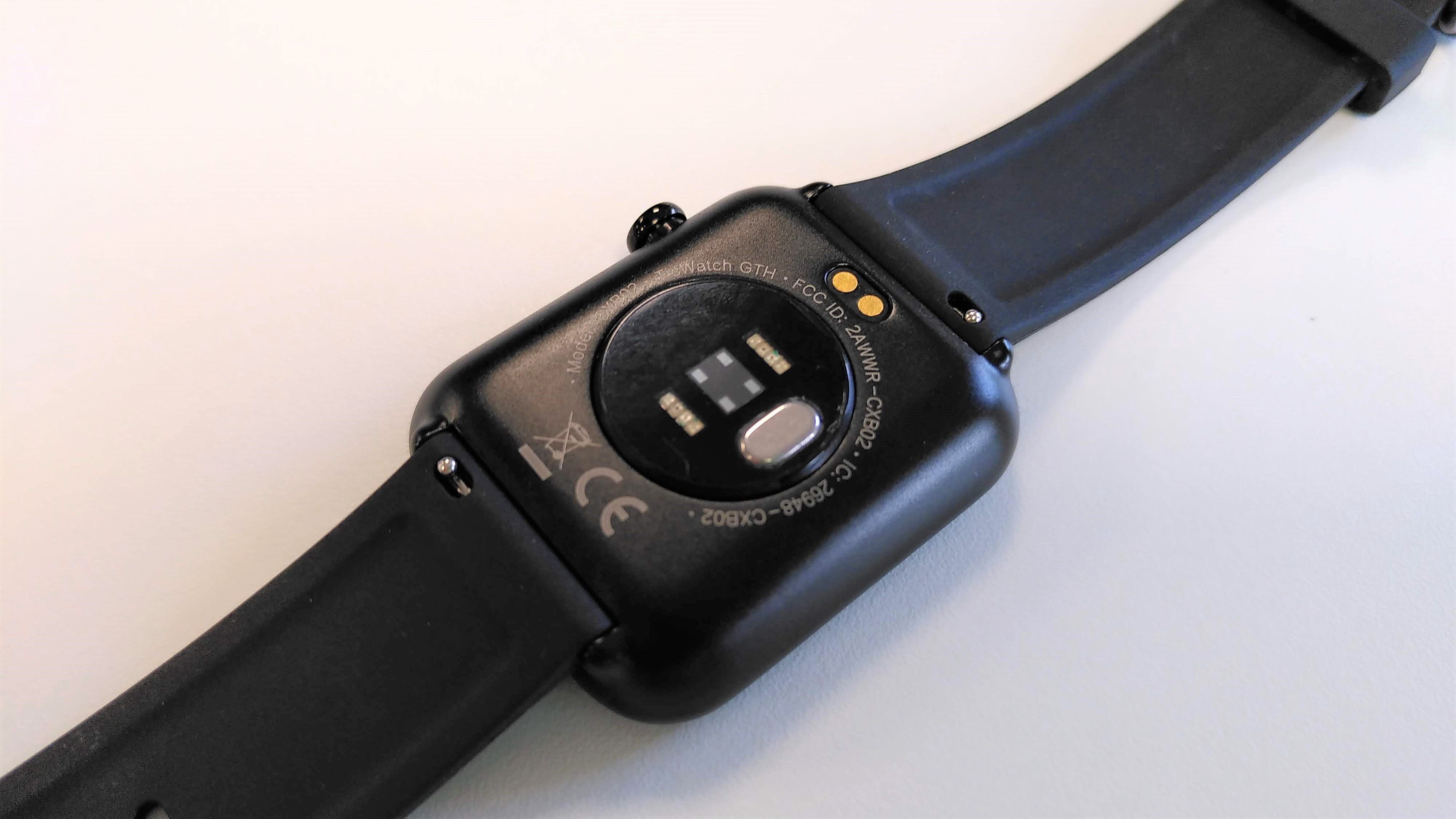
While changes in skin temperature can be an indicator of infection (albeit not enough to make a diagnosis, and nowhere near as useful as an actual thermometer), the TicWatch GTH gives you very little information about what your own reading actually means. When it's measured, you'll be given the temperature and if it's within normal limits, a notification that "your skin temperature is maintained well". No further explanation is given here, or in the Mobvoi app.
Things are a little better with blood oxygen saturation (which is referred to as TicOxygen in the watch's interface). Here you're given a brief explanation of what it means, and what normal levels are, though there's no further detail provided in the app to help you interpret it.
Fitness tracking
The TicWatch GTH has a wide range of sports-tracking modes, including indoor and outdoor running, swimming, jump rope and yoga, plus some more unusual options like basketball, gymnastics and soccer, but these latter options simply measure time, heart rate and calories.
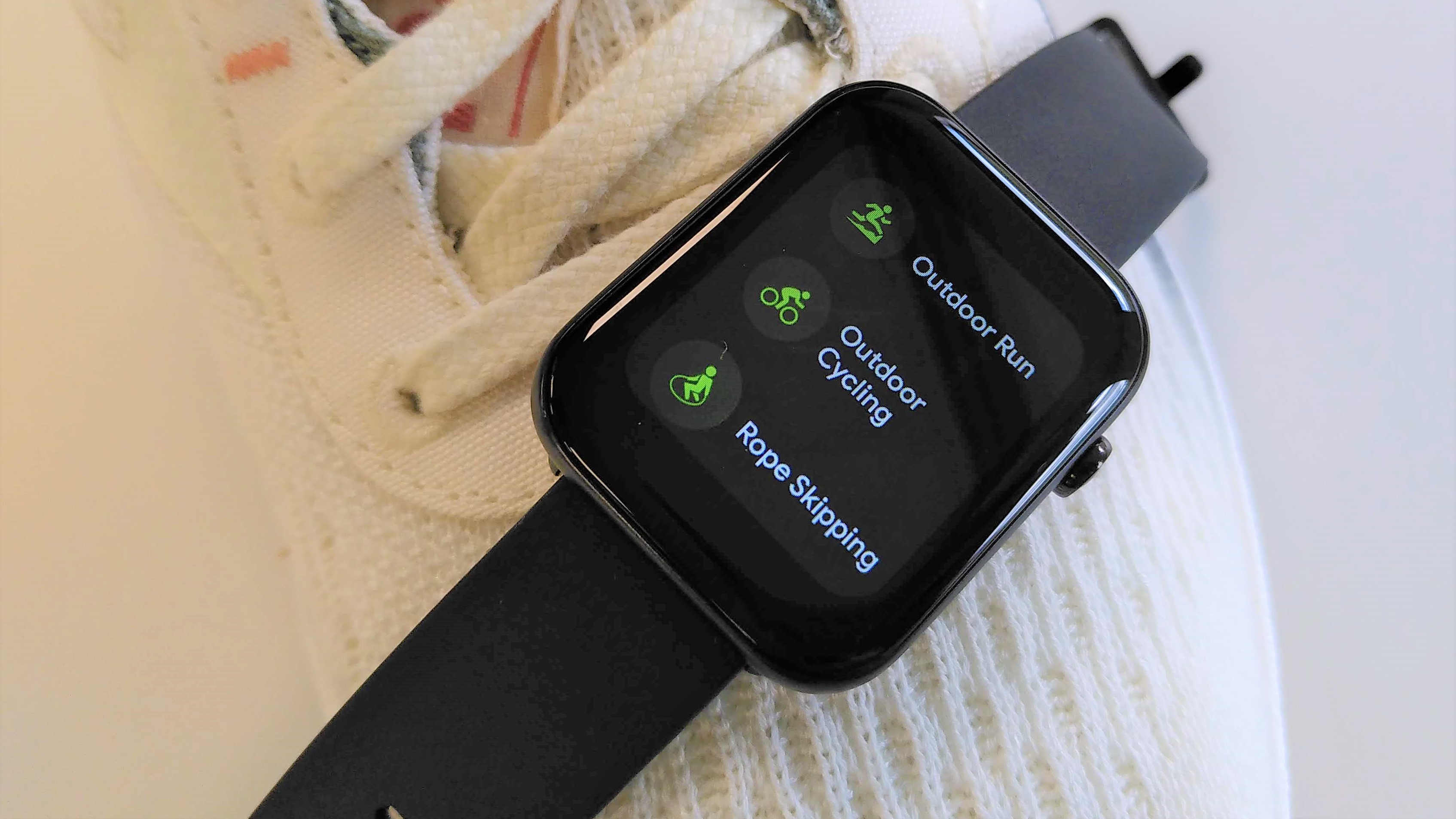
The TicWatch GTH doesn't have on-board GPS, which is to be expected at this price point. Instead, it piggybacks on your phone's GPS receiver. Unfortunately, the results weren't very impressive; our fitness tracking tests include a pre-measured 5km run, for which the TicWatch came up around 1km short. That might not be an issue for someone who's starting some casual exercise, but if you're training for an event then it's a real issue.
Runners and cyclists will also be disappointed to learn that you can't view a map of your workout in the Mobvoi app afterwards; the connected GPS is only used to measure distance.
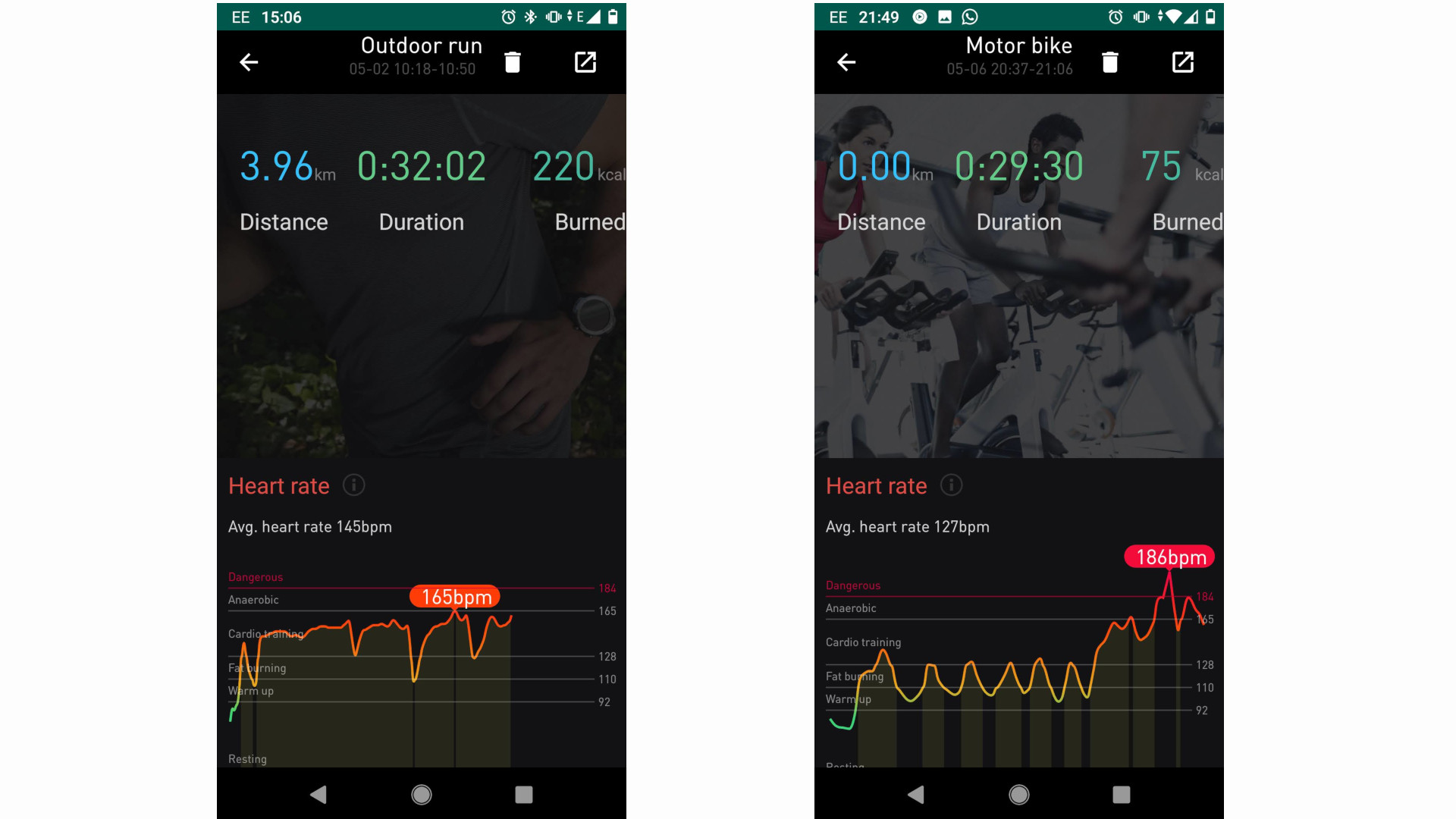
This is a shame, but the biggest problem with this watch's fitness tracking was the heart rate monitor. We tested the TicWatch GTS in several HIIT spin sessions to see how it copes with changes in heart rate. For the most part, its results roughly matched those from a Garmin Venu 2 worn on our other wrist, though it took a few seconds longer for the TicWatch to register changes in heart rate.
In our last training session though, the heart rate measured by the TicWatch continued to climb during our cooldown, reaching a high of over 180bpm while we were gently turning the pedals of our spin bike. We're reasonably certain we hadn't gone into tachycardia; the results were just wrong.
Despite this, the watch consistently gave a surprisingly low figure for calories burned. No watch will be able to give a truly accurate figure for energy use (there are too many factors at play) but under 70 cals for a half-hour session is much less than we would have expected, and is less than half the figure from our Garmin device.
Companion app
The TicWatch GTH pairs with the Mobvoi app - available for Android and iOS. It's easy to pair the device, and data syncs quickly between the two.
Your biometric data is easy to access, with the current day's reading displayed on the app's home screen, and calendar icons that allow you to browser through stats from previous days.
Unfortunately, like the TicWatch GTH itself, the app limited context around each statistic. Some, such as heart rate, provide a button that you can tap for information, but there's so such explanation for blood oxygen saturation.
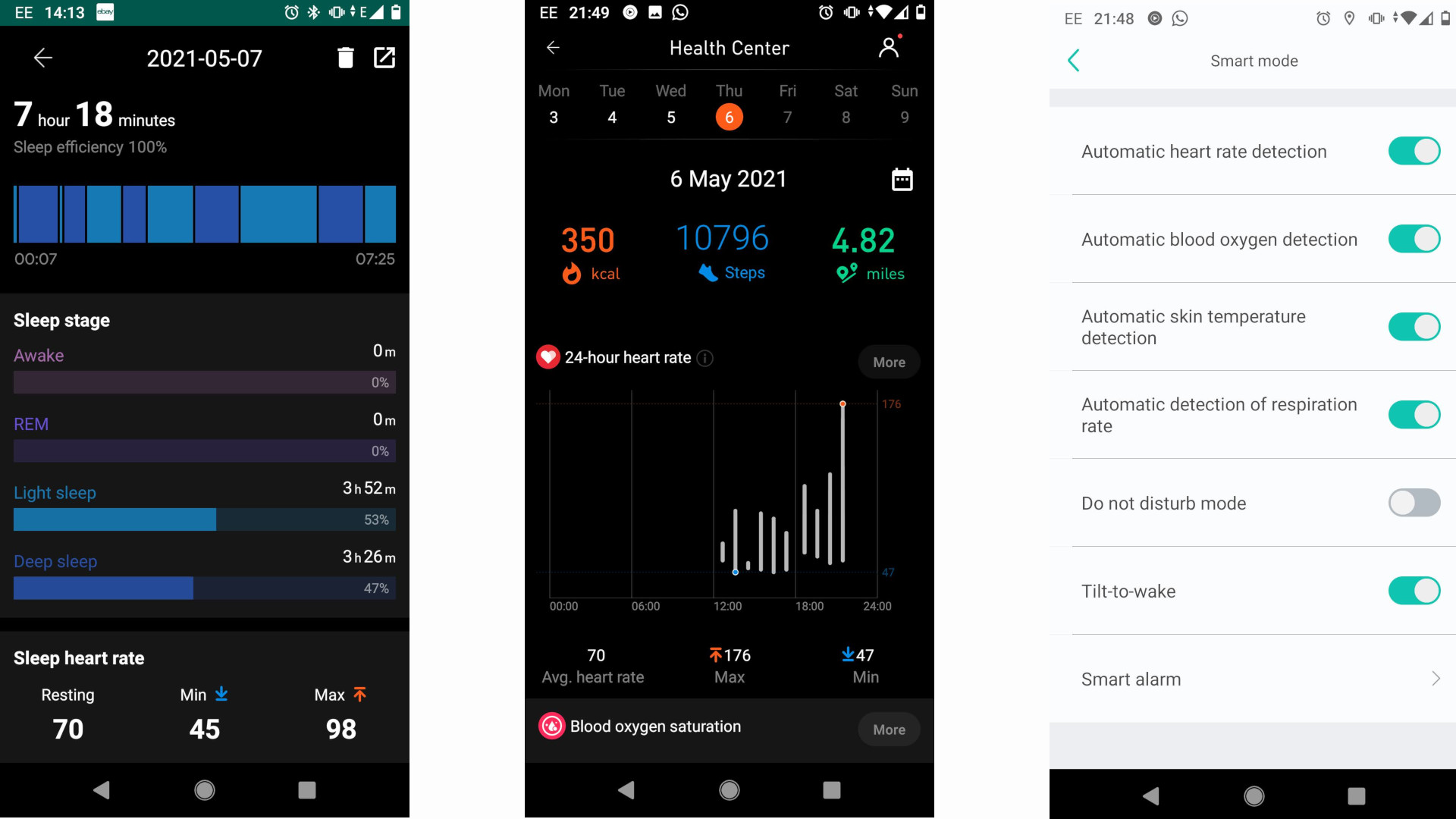
You can see SpO2 measurements taken throughout the day, with average, minimum and maximum values, but the app provides no advice on what this actually means, and what a normal value looks like. This is disappointing for an entry-level device.
One of the app's best features is the Watchface Center, where you can use custom colors and images to create your own face design. You can't tweak the layout of the widgets on-screen, but it's a nice touch that allows you to make the device your own.
Unfortunately, aesthetic touches like this can't overcome this watch's fundamental shortcomings. If you're looking for an affordable fitness tracker then the Fitbit Inspire 2 is a better option, and if you need a budget smartwatch it's worth taking a look at the Amazfit Bip instead.
Buy it if
You like the Mobvoi ecosystem
If you've owned previous Mobvoi devices and have developed a strong preference for the app and interface, then the TicWatch GTH might be the right fit for you.
You want a customizable watch face
The ability to use your own photos and colors to customize the face is one of the TicWatch GTH's strong suits. That's not saying much for a smartwatch, but if personalization is important to you then it's worth considering.
Don't buy it if
You're a runner or cyclist
The poor GPS and heart rate monitoring mean this isn't a great watch for anyone interested in distance or heart rate training. We wouldn't expect much at this price, but it's still disappointing.
You want health insights
Fitbit's health reporting has come along in leaps and bounds, and even if you don't upgrade to Fitbit Premium, you'll get far more info on your health with an inexpensive Fitbit Inspire 2 than the TicWatch GTH, for only a little more cash.
- We've tested and rated the best running watches
0 comments:
Post a Comment